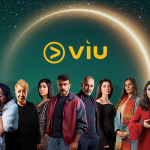John Kochanczyk looks at the power of digital workflows and debates whether they truly help to save budgets for filmmakers. Digital technology has transformed the way in which we live and work today. It has presented a spectrum of tools and possibilities that can be performed from a device as simple as a laptop or […]

John Kochanczyk looks at the power of digital workflows and debates whether they truly help to save budgets for filmmakers.
Digital technology has transformed the way in which we live and work today. It has presented a spectrum of tools and possibilities that can be performed from a device as simple as a laptop or a cell phone. This range of power, until recently was largely reserved for high-end applications and practices. However, with several new technologies on the horizon come an ever-increasing number of choices; which, in turn, have allowed for enormous diversity to be brought into the digital media worlds, thereby allowing for an ever-increasing band of error and confusion.
Taking a small example from the current technology available today, an individual armed with a high-speed hard drive array, a laptop computer, and a few essential pieces of software has the full ability to ingest 5K and above video data, edit it, apply elaborate transitions and feature film quality visual effects, colour grade the footage, manipulate the audio, and output to industry recognised standards and deliverables all from the comfort of their home.
In essence, filmmakers today are capable of delivering a box office quality feature film from a low-cost setup. This is an astounding ability available to us, and the power and performance in these current devices will only get cheaper and more powerful in the years to come.
However, along with this, we also see the loss of conforming to standards and workflows that should control this technology. This has allowed for an individual with enormous skill as an editor, for example, to apply their own visual effects and mix to the audio.
Although this could be the next award-winning edit to be viewed by the public, if it lacks in the other essential areas of the product which falls outside his or her realm of specialisation, the overall quality of the product could deteriorate considerably.
That is the BIG issue with the abundant power available to us today. Individuals are expected, in less time and for a cheaper price, to do a lot more work, in which a larger portion falls outside their skill sets, competency, and knowledge base.
Before the rampant acceleration in digital technology that has occurred in the last few decades, skills of the media professional were largely directed towards a specialised field and application. They worked long hours and lost sleep just as much, if not more so than today. They worked in a specialised environment with specialised tools that had very established workflows and targets. They had to experiment and create the technology, to deliver that next mind-blowing visual effect or unheard sound effect constrained by a basis of limited choices and options developed through their own understandings of the field and technology.
Today, these tools are circumventing established standards by offering that automatic button, and releasing the individual from the necessity of having a basic understanding of how the medium works and fits together as a part of multiple diverse departments and skills.
For example, consider a feature film entering the post-production phase of development. The fundamental approach in terms of how to begin to ingest and attack the vast amounts of data and clips and to structure them into a working edit of the story, transfer that story through all the departments from editorial to colour grading, sound, visual effects, and distribution has not changed. The amount of work and precision required to maintain a hierarchical structure and to track the data through all its phases is enough to keep a team fully occupied and counting the creative input that brings the story to life through its phases.
This is where the power available to us begins to affect the processes at work. Choices can be made in the beginning phases of editorial, which can have dramatic effects on the ability for future individuals to creatively and actively work on a chosen project effectively down the road.
As a basic proof of the matter, take a director who has shot his film on the RED camera and has set up a workstation at his home, from where he begins to edit his film. He edits the whole feature together and is very happy with the results and is now seeking the final finishing phases for the film to get it ready for distribution. For him, the present digital technology provides a fantastic opportunity.
However, several unwitting choices could potentially strike in this final phase and affect the film meeting its estimated deadlines and budget requirements.
Look at the number of things that could go wrong in this case.
Imagine if the director edited his RED footage in a timeline that possibly had a different frame rate from the source footage as was the case in one of the instances we faced. In this case, it was automatically formatted to edit at a different resolution, aspect ratio, and colour bit depth. That is a big challenge by itself.
Secondly, the director, in this eagerness to edit the film, used the audio guide track on the camera, neglecting to synchronise the separate high-quality production sound.
Now, a lot of these issues can be quickly altered through the clever use of the software available today. But since these issues were not addressed early on, the post-production team spent an enormous amount of time and work to prepare the data and get it ready to begin their processes.
In extreme cases like the audio, for example, the film might have to be entirely rebuilt from scratch on a clip-by-clip basis to re-link and prepare the production audio for editing, sound design, Foley, and mixing. Consequently, one would be wasting a lot of budget and time.
These issues appear to be more apparent as the digital technology progresses and more automatic buttons are introduced into the software. The choices made by individuals who unwittingly indulge in such practices combined with the desire to make a film at a reduced budget and to specific deadlines cause more time and money to be spent saving a project as opposed to bringing it to life and entertaining the audience.
While we are presented with a number of choices today on what cameras, resolutions, frame rates, and software to use, it is ideal to consult a specialised professional at every stage from pre-production through to production and post to ensure one truly benefits from the digital workflow. The abilities available to us at ever decreasing prices allows for an enormous amount of new creative possibilities and influences to add new levels of enjoyment to every project in development or to come. But the importance of establishing a dedicated workflow for whatever scale of project to ensure it is handled to the best of its ability cannot be overemphasised.
John Kochanczyk is the supervising sound editor at Mile Studios.















































































